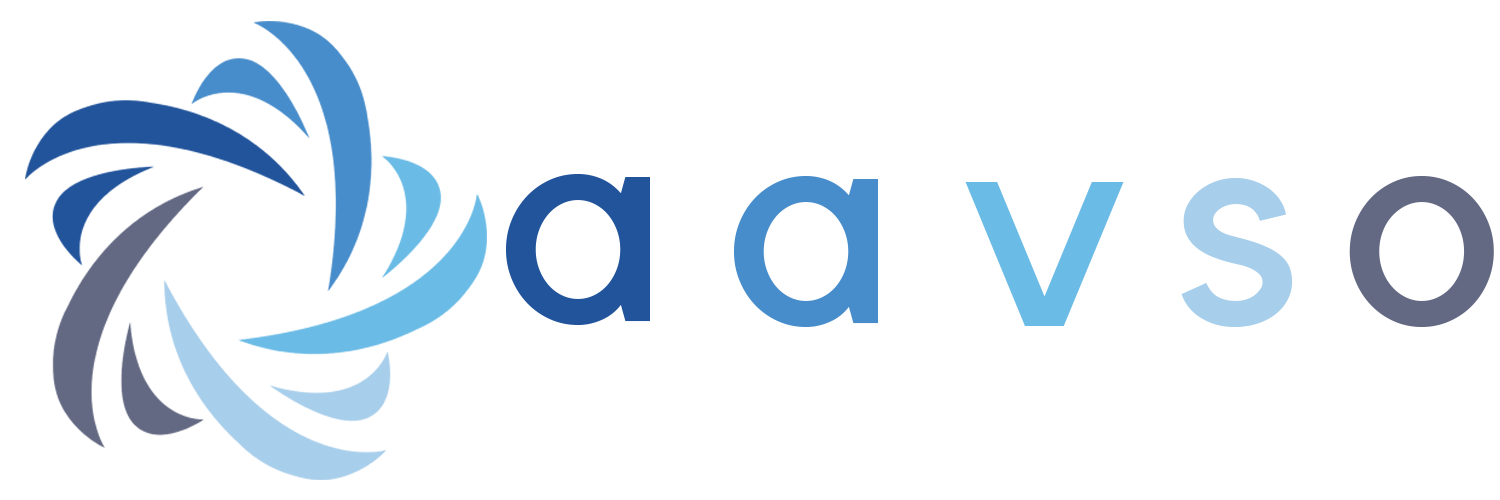
See what Boyce-Astro can do for you!
Each webinar provides instruction on a different astronomy-related activity or topic!
Join us in these Zoom webinars to learn from guest expert instructors, ask questions, and meet others with the same interest! The audience-driven nature of the Q&A leads to some quite extensive discussions, so there is no set cut-off time for the majority of these sessions.
Any cost? No, they are free to encourage your astronomy education!
When: The first Saturday of each month* in 2023
2 p.m. Eastern Time (19:00 UTC from January through March, 18:00 UTC from April through October, and 19:00 UTC in December).
* Please note the exception: A webinar will take place Oct. 28 instead of Nov. 4 due to our Annual Meeting.
Upcoming webinars
We will return in 2024 with even more educational webinars! Want to participate in a live webinar? You can view the schedule of speakers and register for these free events in our interactive calendar.
Past webinars
How to observe in the city
Broadcast on December 2, 2023
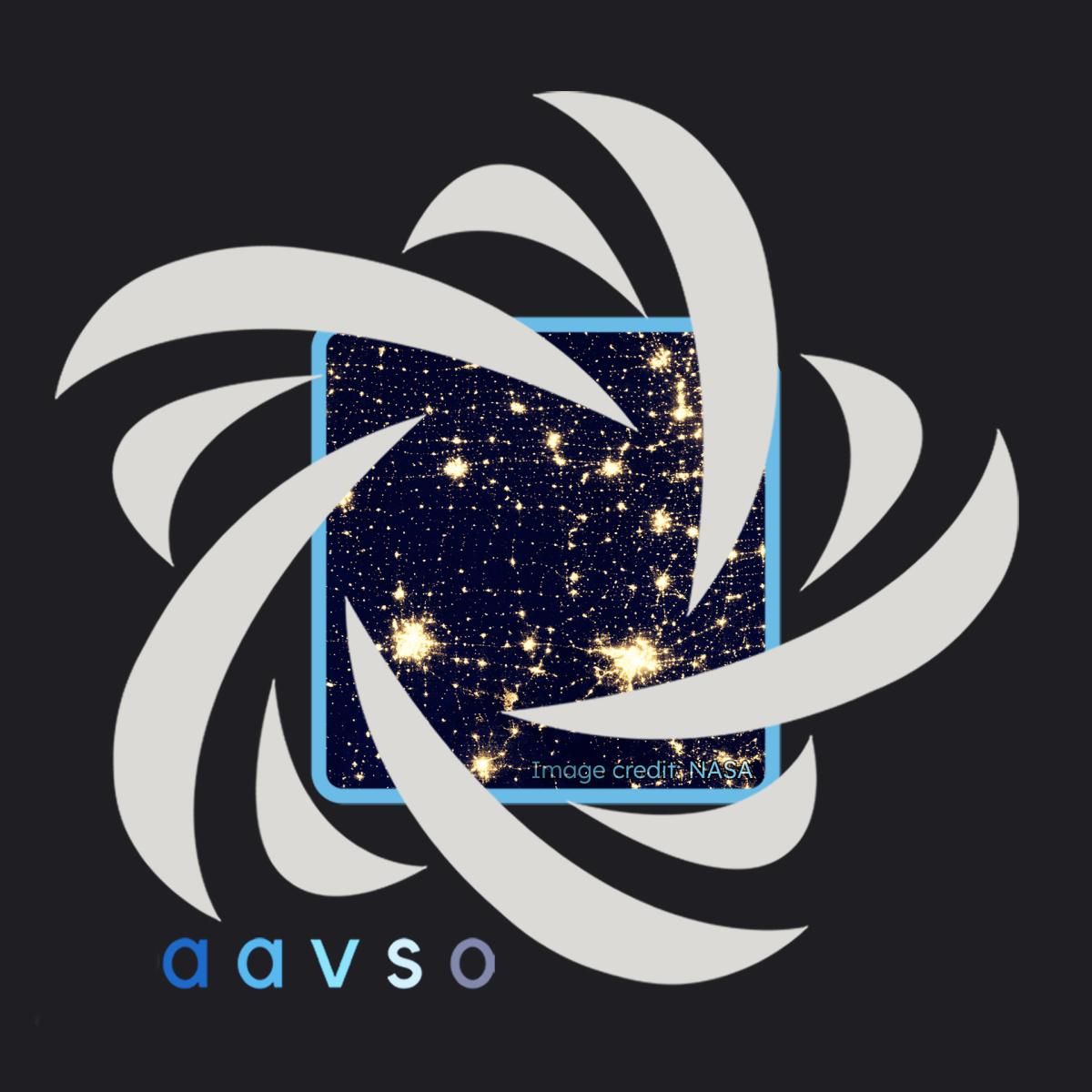
Not everyone is fortunate enough to have access to dark skies and secure observatories. With light pollution on the rise and nosey neighbors around every corner, what's an aspiring citizen scientist to do?
Answer: Science! With a little ingenuity, it's possible to observe even in the brightest inner-city environment: something which our Executive Director, Dr. Brian Kloppenborg, knows only too well. As practiced as he is at doing science from his balcony, it's only fitting that he join us to share his experience with observing from urban environments, and provide advice and techniques for making the experience more productive. Highlights of his talk will include:
- The impact of light pollution, and science you can do in spite of it
- Finding a safe place to observe—legally!
- Observing with extremely limited horizons
- Convincing your HOA to allow you to do astronomy
- The rapidly changing landscape of smart telescopes
- The possibility of a mobile observatory setup
Afterwards, in true How-To fashion, we'll host an extended interactive Q&A, so that you can ask Dr. Kloppenborg your own questions about all things urban observing.
This will be our final broadcast before the start of the new year. Don't miss this special, series-end webinar!
How to DIY your own astronomy equipment
Broadcast on October 28, 2023

If you’ve ever built something, you know the sense of satisfaction that comes from using something you made with your own two hands. Whether you’re working with a kit or designing from scratch, building your own astronomy equipment can be a means to save money, a way to fully customize your gear to your specific needs, and an enjoyable pursuit in its own right. With this webinar, we want to promote the ingenuity of our community of DIYers, and maybe even inspire your next project.
Meet the instructors:
- Michael Rapp is a visual observer. He will present on his homemade binocular mount which he uses for easy weeknight variable star observing.
- Tim Stone is a spectroscopist. He will present on his driveway observatory made from repurposed wood.
- Tony Rodda is a spectroscopist. He will present on his experiences with various 3D-printed spectrograph designs.
- Dr. Brian Kloppenborg is Executive Director of the AAVSO. He will present on his design for a DIY all-sky camera.
How to use Astropy & Astroquery
Broadcast on October 7, 2023
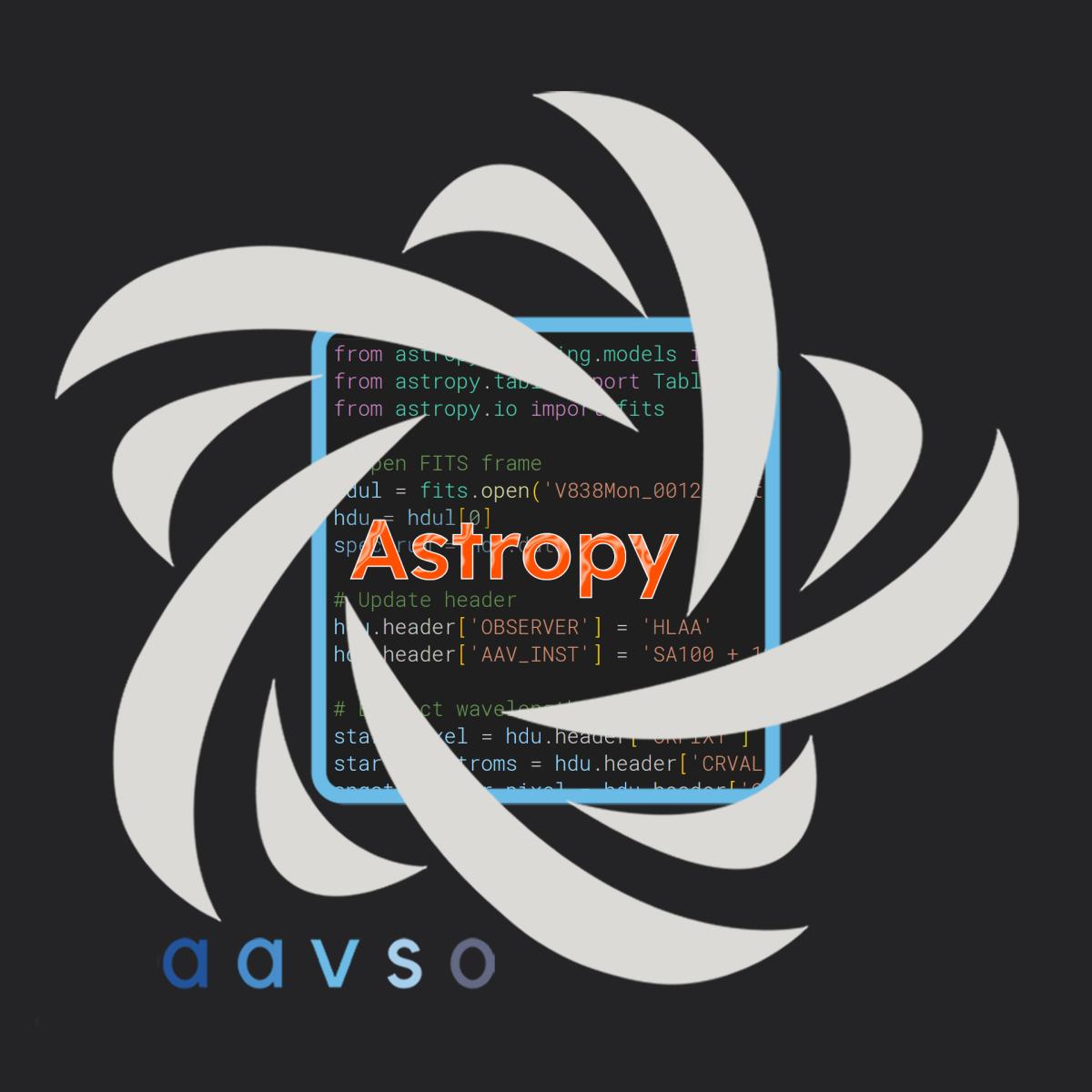
Join us for a How-To all about Astropy & Astroquery! In this webinar, we’ll focus on how to perform fundamental astronomy tasks in Python.
Astropy is both a Python package and an ecosystem of related packages meant to provide the nuts and bolts for doing astronomy with Python. It includes tools for representing times and coordinates, and for representing FITS filter and data tables, along with tools to process those things. Astroquery is a part of the Astropy ecosystem which provides a consistent interface to a very wide range of data sources — things like Gaia, TESS, and Kepler data, as well as any data table in the Vizier system (including APASS DR9!). After a little bit about installation, we’ll do some short examples using both Astropy and Astroquery. All of the Python will be in Jupyter notebooks.
Meet the instructor:
Matt Craig is a professor of Physics and Astronomy at Minnesota State University Moorhead, a small state university in western Minnesota. He has been a contributor to Astropy since 2013, and is one of the primary authors of the ccdproc package for calibrating data. He spends way too much time working in Jupyter notebooks, but does enjoy turning every problem into a Python problem.
Recurrent Nova T CrB Coming Soon to a Sky Near You!
Broadcast on September 9, 2023
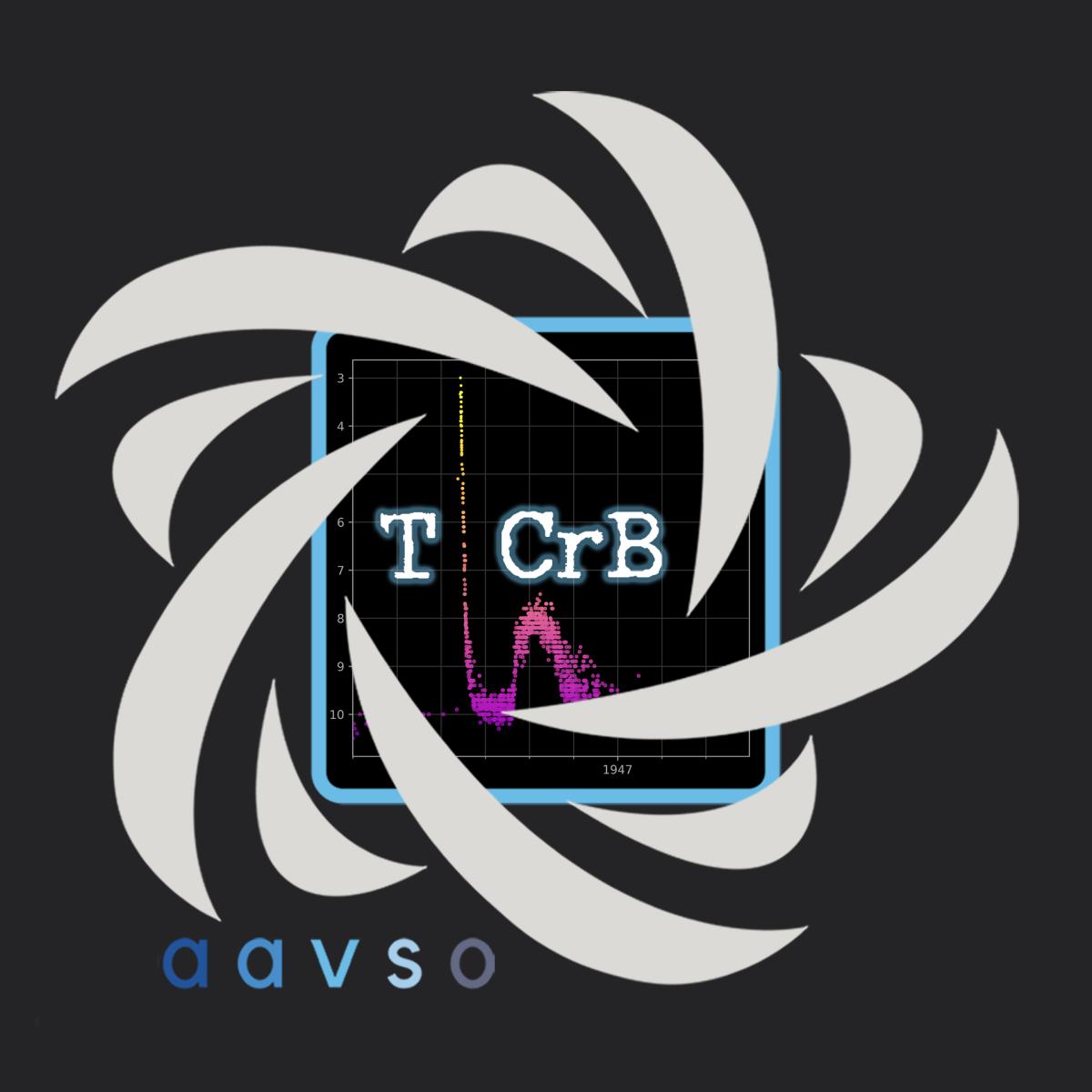
Join us for a special broadcast, presented by Dr. Brad Schaefer, and brought to you by the AAVSO Cataclysmic Variables Section! Dr. Schaefer will discuss the history of the famous recurrent nova T CrB, the latest research into its unusual behavior, and the expected details of its imminent eruption. He will also talk about how amateurs can contribute to the study of this historic event, as well as the ongoing work on other recurrent novae. After the talk, Dr. Schaefer will remain available for a Q&A session.
Meet the instructor:
Dr. Brad Schaefer, Professor Emeritus of Physics and Astronomy at LSU, is a renowned astronomer who contributes across many areas including supernova cosmology, novae, recurrent novae, gamma ray bursts, solar system astronomy, and the history of astronomy. He is also a long-time friend and supporter of both the amateur astronomer community and the AAVSO. You can learn more about Dr. Shaefer's work on his LSU faculty page: https://www.lsu.edu/physics/people/faculty/schaefer.php
How to use the AAVSO Target Tool
Broadcast on September 2, 2023
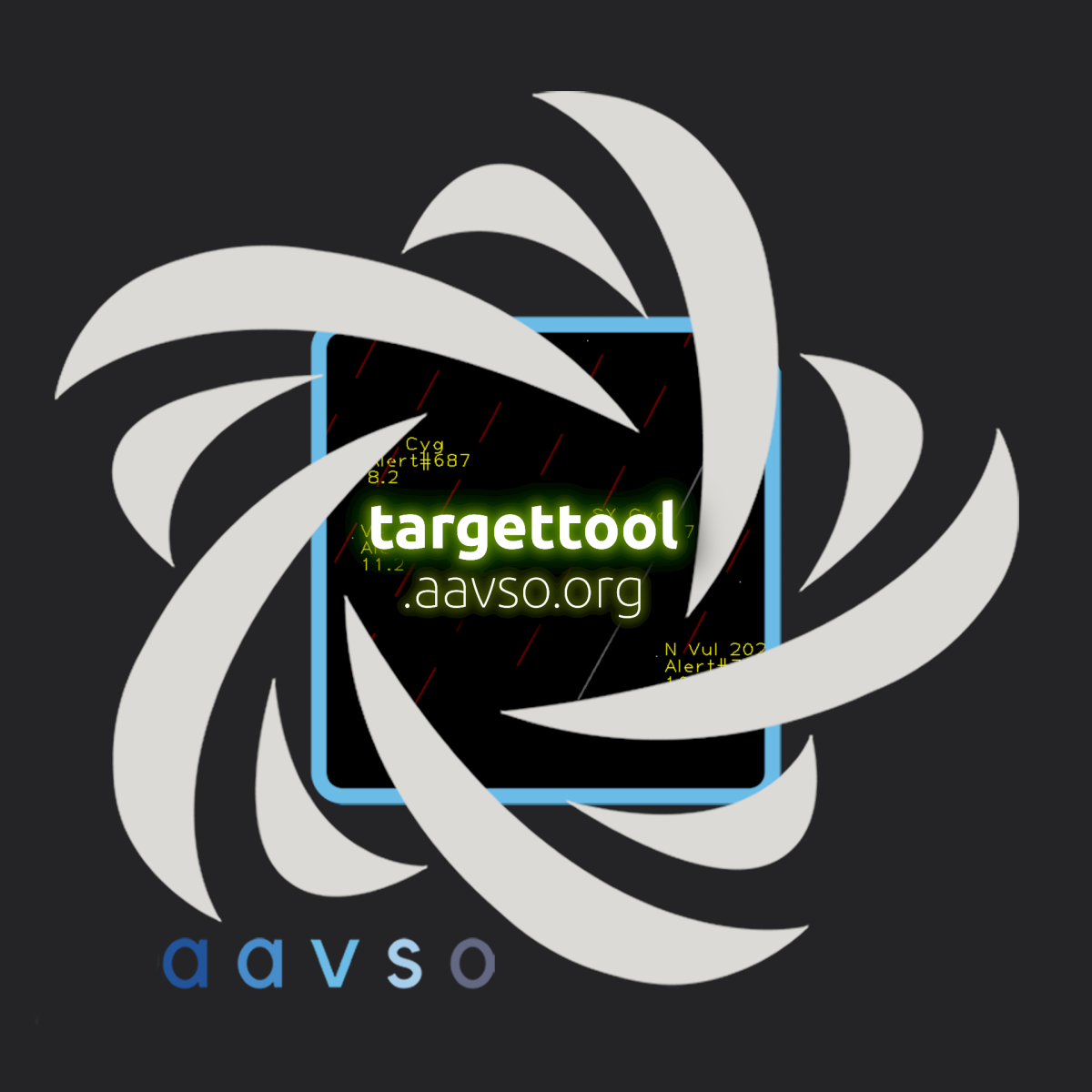
Do you know which stars most urgently need to be monitored right now? It’s a tricky question, but the AAVSO Target Tool (now hosted by the AAVSO and greatly revised) is here to help. Join us on September 2nd as Mark Sproul leads a deep dive into the nitty-gritty of the Target Tool. After a general introduction to the Target Tool and how to use it, we’ll take a closer look at its various interfaces, the data which it contains, and how you can access that data, both manually and programmatically.
If you’re looking for new targets to study, this webinar is for you. Don’t miss it!
Meet the instructor:
Mark Sproul is a software engineer with over 45 years of experience. He has a Bachelor's degree from Rutgers School of Engineering in Electrical/Computer Engineering, and a Master's degree from Steven's Institute of Technology in Mechanical Engineering. His interest in astronomy centers on software development for running observatories and image processing.
He started working with NASA images from Voyager space craft in the 90's and resurrected his interest in astronomy in 2015 which led him to build his own observatory including a home built 15 foot dome. He has written all of his own software to allow remote operation of his observatory, all open source.
All About AAVSO Sections: AAVSOnet, HEN, I&E, & LPVs
Broadcast on August 5, 2023
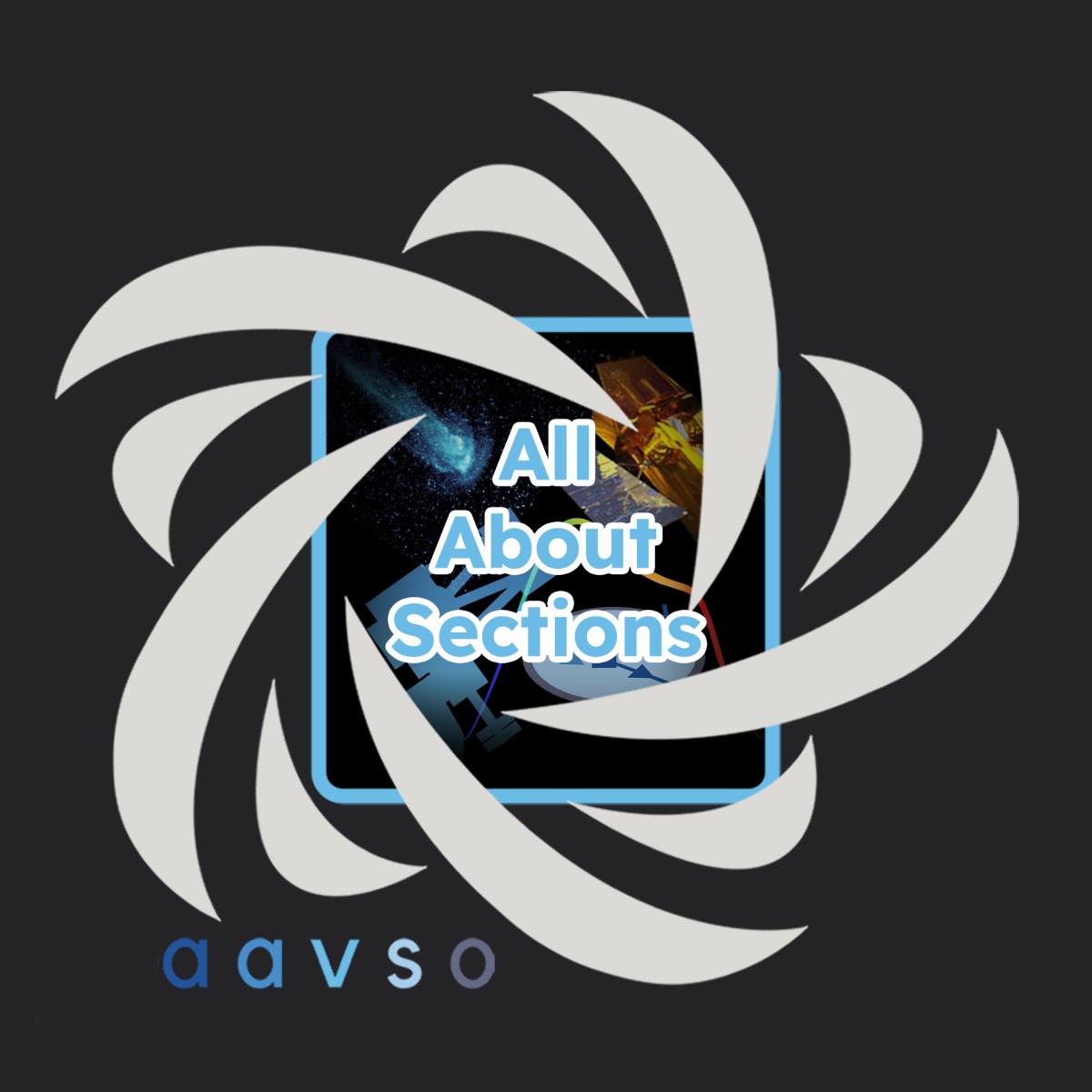
In this special webinar, we will spotlight the leaders of four of our Sections. If you’re interested in any of these topics...
- AAVSOnet
- High-Energy Network
- Instrumentation & Equipment
- Long Period Variables
...then this webinar is for you!
Dr. Brian Kloppenborg, the AAVSO’s Executive Director, will be our host. Joining him will be four of our talented volunteer Section Leaders: Arne Henden, Heinz-Bernd Eggenstein, Peter Bealo, and Mike Soukup.
This is a perfect opportunity to learn about Sections: what are they, and what benefits can you get from joining one?
All About AAVSO Sections: EBs, SPPs, Solar, & Spectro
Broadcast on July 8, 2023
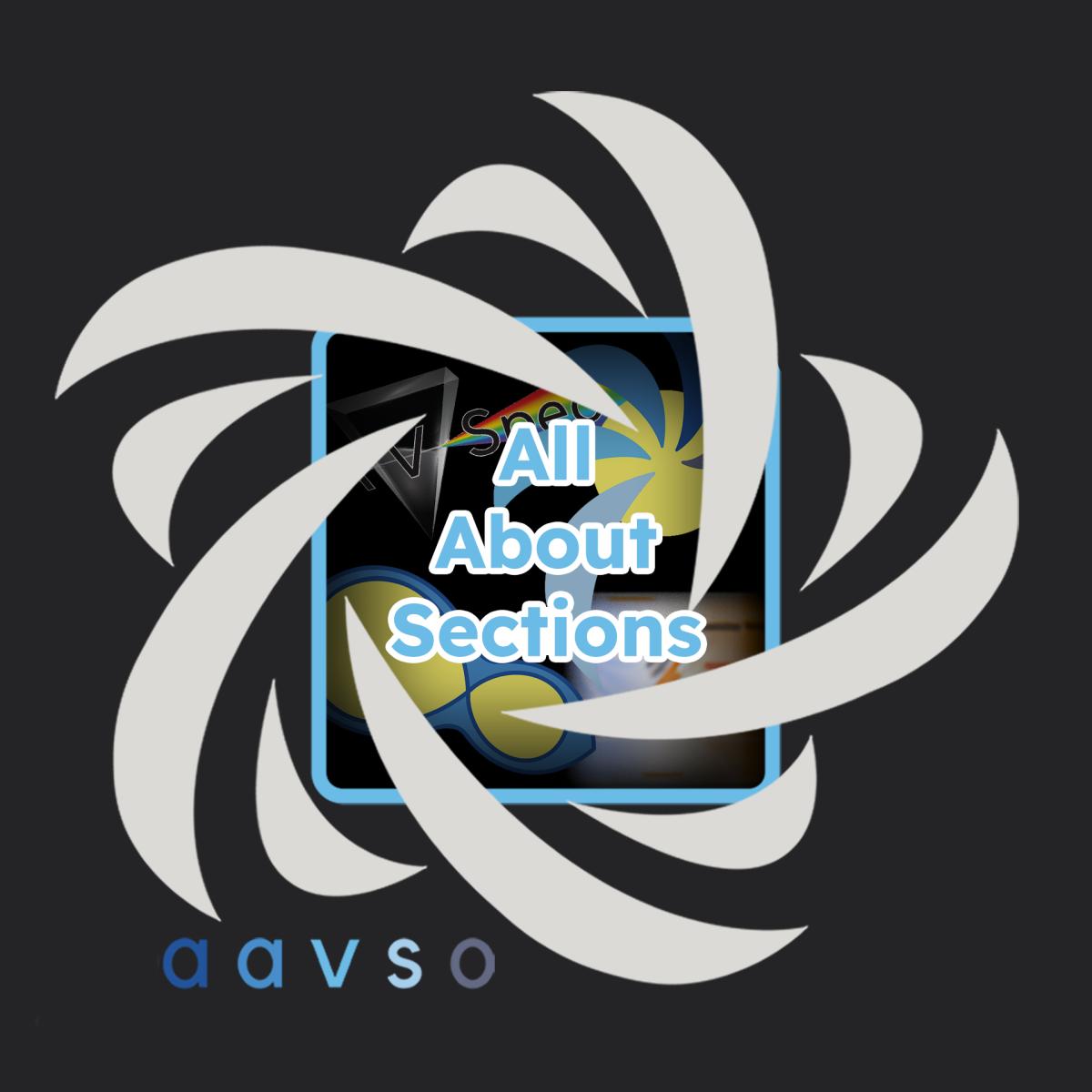
In this special webinar, we will spotlight the leaders of four of our Sections. If you’re interested in any of these topics...
- Eclipsing Binaries
- Short Period Pulsators
- Solar Observing
- Spectroscopy
...then this webinar is for you!
Dr. Brian Kloppenborg, the AAVSO’s Executive Director, will be our host. Joining him will be four of our talented volunteer Section Leaders: Eric Hintz, Kevin Alton, Kris Larsen, and Lauren Herrington.
This is a perfect opportunity to learn about Sections: what are they, and what benefits can you get from joining one?
All About AAVSO Sections: CVs, Exoplanets, PEP, & YSOs
Broadcast on June 10, 2023
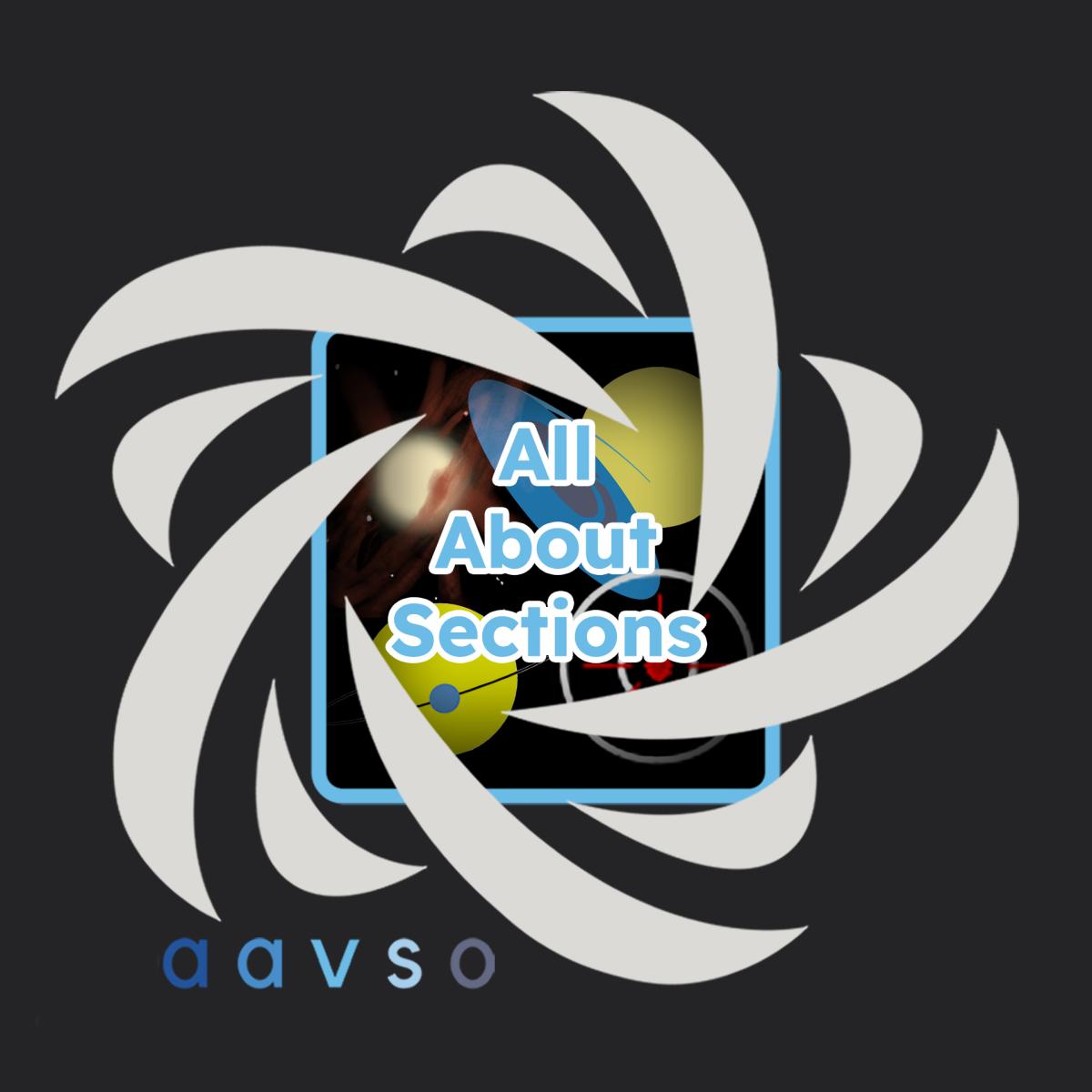
In this special webinar, we will spotlight the leaders of four of our Sections. If you’re interested in any of these topics...
- Cataclysmic Variables
- Exoplanets
- Photoelectric Photometry
- Young Stellar Objects
...then this webinar is for you!
Dr. Brian Kloppenborg, the AAVSO’s Executive Director, will be our host. Joining him will be four of our talented volunteer Section Leaders: Shawn Dvorak, Dr. Dennis Conti, Tom Calderwood, & Mike Poxon.
This is a perfect opportunity to learn about Sections: what are they, and what benefits can you get from joining one?
How to do variable star outreach
Broadcast on May 6, 2023
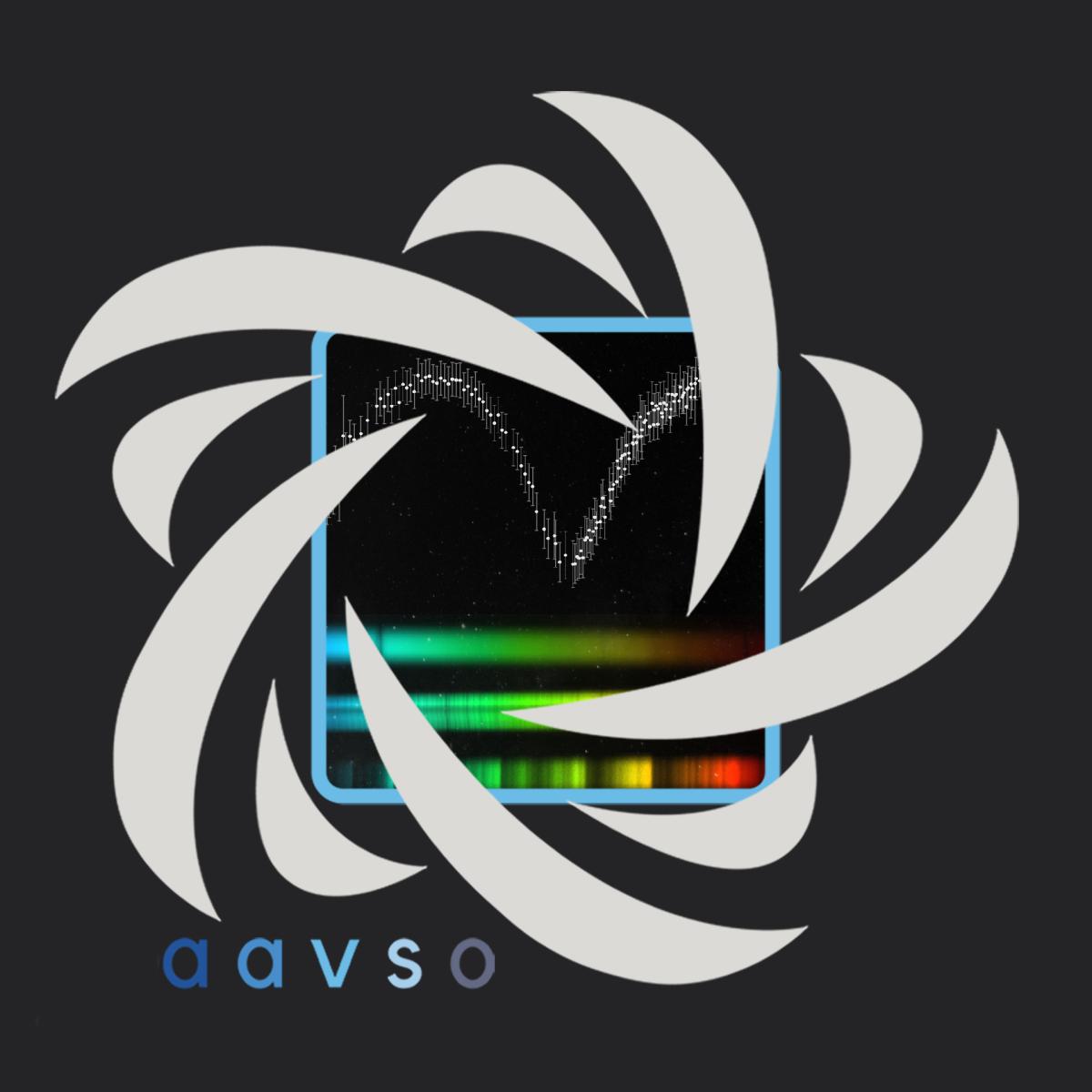
Webinar Description: Join us for a How-To all about variable star outreach! We’ll begin with a talk by Gary Hawkins, sharing how he uses real-time photometry for “sidewalk astronomy”-style outreach. Next, Patrick Kavanagh will share how he created an educational spectroscopy course in order to introduce his astronomy club to the wonders of the stars. Finally, we’ll wrap up with an extended interactive Q&A session, so that you can get advice on how to do variable star outreach yourself!
Agenda
"Demonstrating Real-time Photometry" by Gary Hawkins
The demonstration of real-time photometry to astronomers and the public offers a powerful and seldom-seen outreach opportunity. This talk describes the equipment and software used to provide such demonstrations at the Julian StarFest, Julian CA in August 2022. Real-time light curve plots were provided on a large screen monitor of the W UMa variable, V796 Cep. With a period of 9.43119 hours, it was possible to see the divergence between the V796 Cep and the comparison star light curves in relatively short order. Members of the public were fascinated by the thought of two stars orbiting each other in such close proximity, and that amateur astronomers could make meaningful contributions to the scientific world.
"Spectroscopy Outreach in Astronomy Club" by Patrick Kavanagh
My hands-on introductory course in Astronomical Spectroscopy covered the history of spectroscopy from Fraunhofer on, and took a look at each Spectral Class, O, B, A, F, G, K, and M, with sample easy-to-find stars. I covered techniques for using a Diffraction Grating with a Canon DSLR camera, and ran a data reduction workshop using the RSpec software.
Meet the instructors:
Gary Hawkins spent most of his career in the telecommunications industry, facilitating the design and build of mobile phone networks worldwide. However, Gary loves to experiment with new projects; most notably, he’s run a fitness company, written two books, participates in HAM Radio competitions, and since retirement, is an avid astronomer. About four years ago, he became a visual observer using a secondhand Orion XT8 dob, quickly moved to Electronically Assisted Astronomy, and then, after taking an exoplanet course, now focuses on photometry. Gary is a CMOS photometry mentor for the AAVSO, a Member of the San Diego Astronomy Association, and holds a Ph.D. In Satellite Communications from the University of Bristol, England.
Patrick Kavanagh was born in Philadelphia, and has been a Mexican resident since 1972. He’s an active member in the Centro Astronómico Clavius, and he took a course in astrophotography at Iberoamericana University in 2018. In June 2020, he began practicing low resolution diffraction grating spectroscopy. He assisted with the 2020 AAVSO Spectroscopy Workshop, and joined the AAVSO, through which he received training in photometry. In June 2022, he founded the Copernicus Club, where he offers weekly talks. From October to December 2022, he gave a spectroscopy course to the Copernicus Club.
How to model isochrones using images of star clusters
Broadcast on April 29, 2023
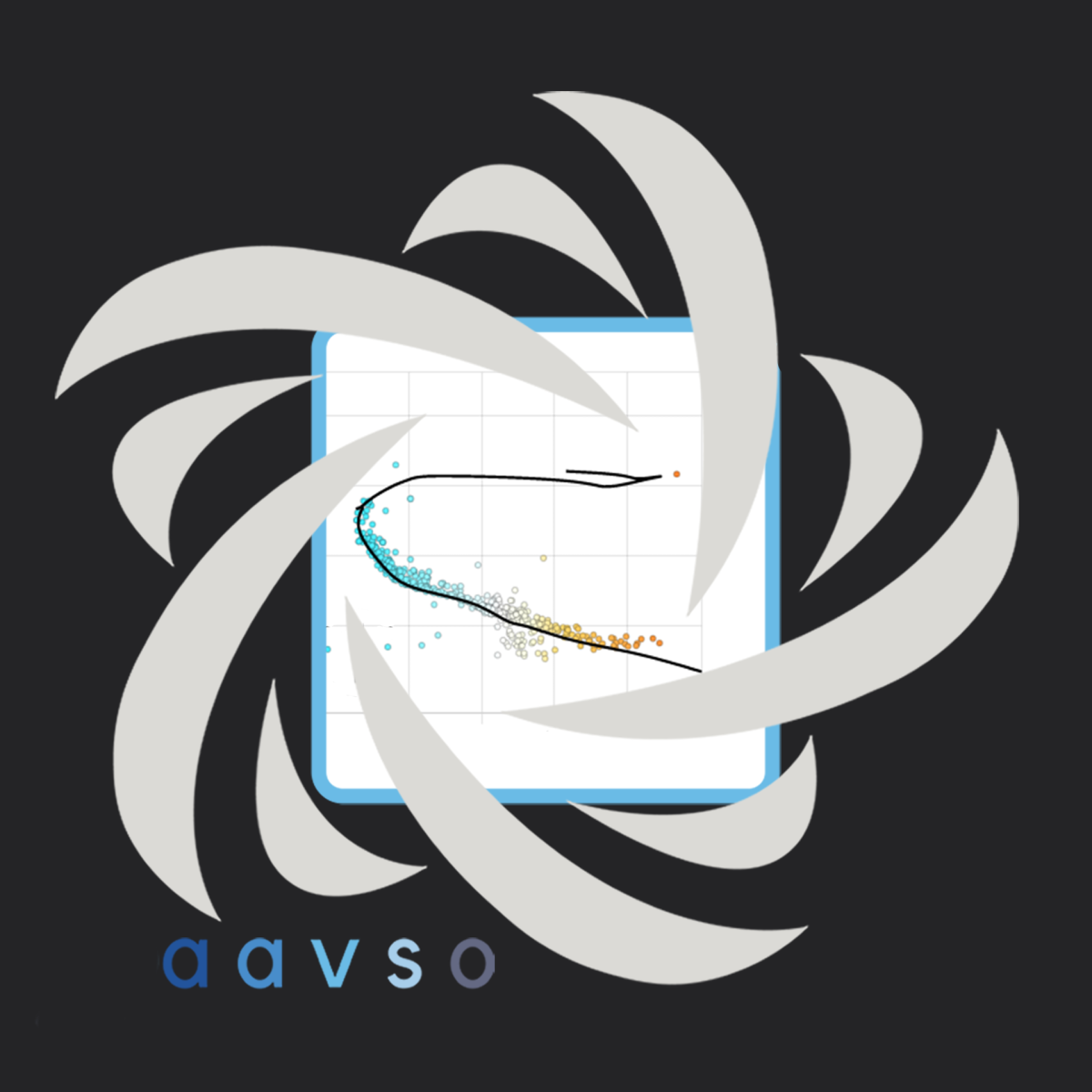
Webinar Description: Star clusters have been described as ideal astrophysical "laboratories" because differences between the stars within them can be attributed completely to variations in initial mass. Students are drawn in by the alluringly beautiful images of the clusters and are excited to construct lovely color images of them. This in turn motivates them to learn about some of the (equally stunning!) physics that can be revealed by the colors in their image. It is a rewarding marriage of art and science!
Meet the presenter: Kalée Tock earned her B.S. in Chemistry from Harvard University, and an M.S. from the Stanford University Department of Chemistry. She then earned a second Master's degree in Learning, Design, and Technology from the Stanford School of Education. She has been a science instructor at Stanford Online High School for 11 years, teaching Astronomy for the most recent 6 of those years. She now teaches three different Astronomy courses there: Astrophysics, Astrobiology, and an Astronomy Research Seminar.
How to use AAVSOnet to remotely observe variable stars
Broadcast on April 1, 2023
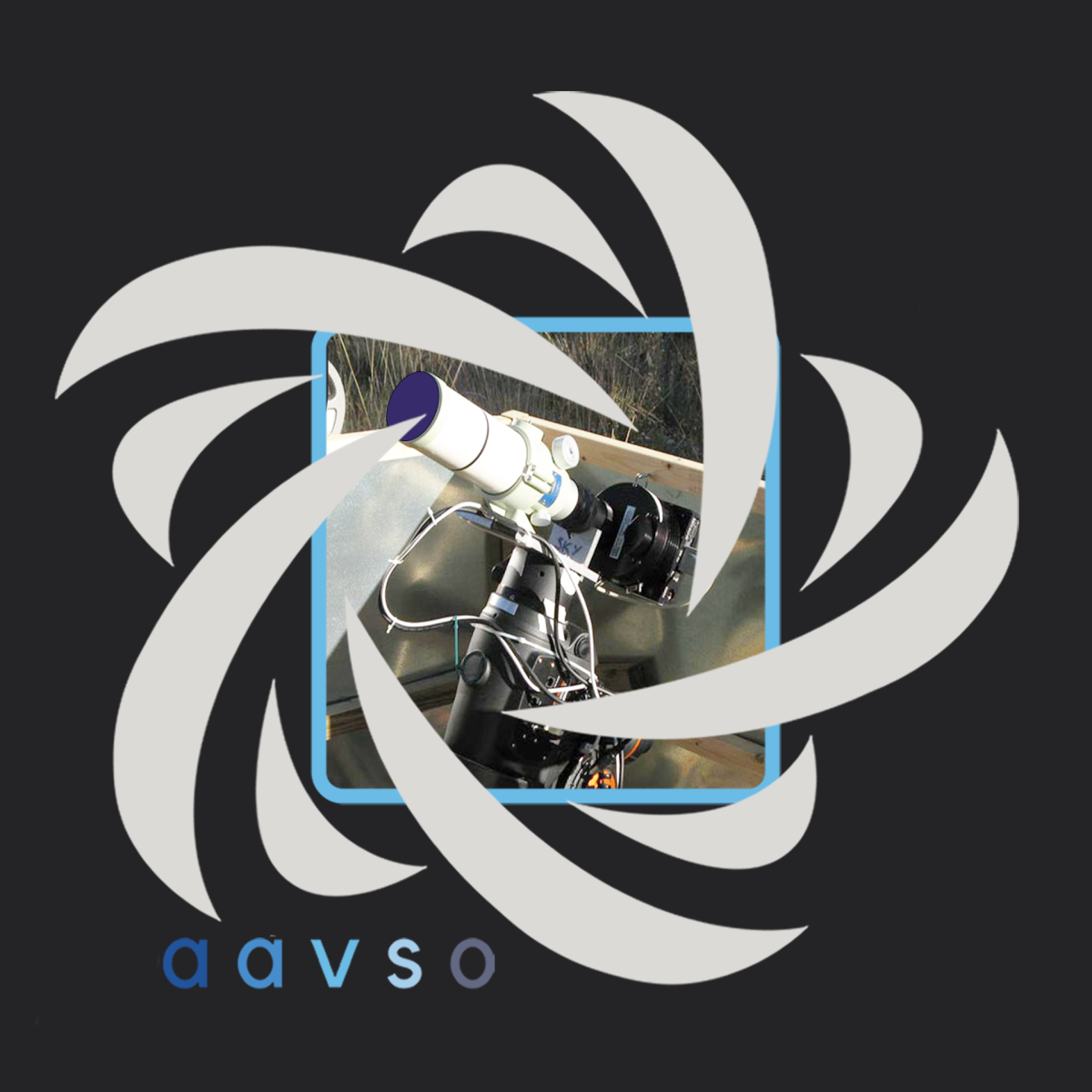
AAVSOnet is a global network of remote telescopes which any AAVSO member can use! With observatories in every hemisphere, and telescopes ranging from 4" to 24" in size, AAVSOnet gives AAVSO members the ability to collect precision photometry of almost any star brighter than 18th magnitude. In this webinar, we'll begin with a tutorial showing you how to use AAVSOnet to get data of your own targets, presented by AAVSO Board Member Dr. Arne Henden. Next, we'll hear from three top users of AAVSOnet, each with an example of an exciting project you can tackle using AAVSOnet. Finally, we'll wrap up with a Q&A session, giving you the opportunity to ask questions and receive advice from the experts. If you're not familiar with AAVSOnet, and want to learn a bit about it before the webinar, visit aavso.org/aavsonet
The presenters:
Dr. Arne Henden has been the driving force behind AAVSOnet since its founding in 2005, and personally oversaw the commissioning of many of its telescopes. There's no better person to ask about the ins and outs of AAVSOnet!
Enrique Boeneker, has spent three years using AAVSOnet to study AS Cas, a multimode classical Cepheid.
Frank Schorr continually uses AAVSOnet to monitor a wide selection of long period variables, including W Cas and T Cep.
Phil Sullivan has spent several years using AAVSOnet to study a number of variable stars close to NGC 7790.
How To Automate Your Rig: A panel discussion
Broadcast on March 4, 2023
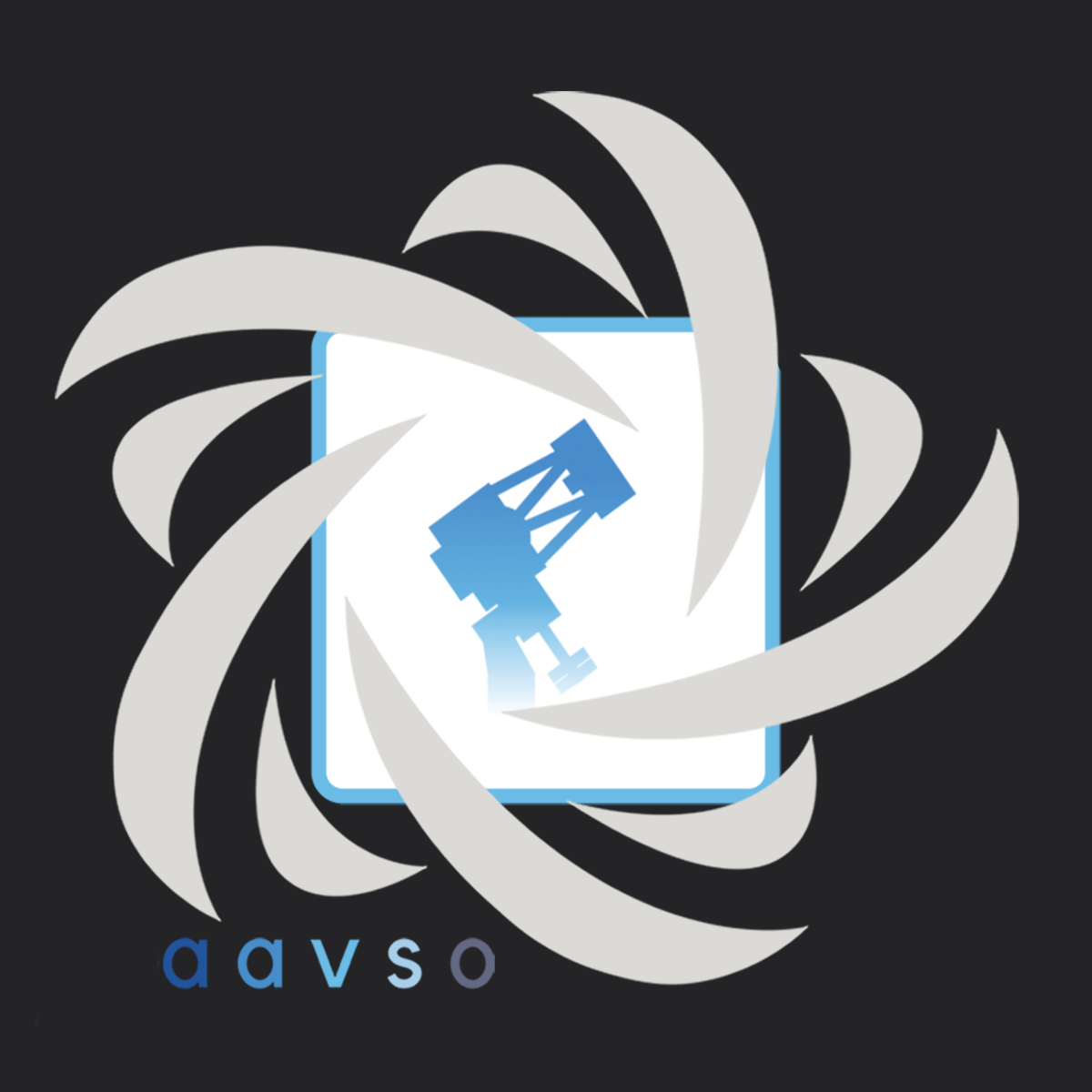
Are you tired of babysitting your telescope? This webinar is for you! In this hour-long panel discussion, we will discuss both the big picture (“What do I need to set up a remote observatory?”) and the minutiae (“Will X software support Y camera?”). Conversation will center on the question at the forefront of everyone’s minds: “How can I set my telescope up for automatic photometry?” This will be a highly interactive event, with lots of opportunities to ask questions. Come prepared by thinking up your best questions ahead of time!
Our panel includes four leading experts on observatory automation:
Peter Bealo, leader of the AAVSO Instrumentation & Equipment Section, and an experienced amateur astronomer.
Stefan Berg, creator of N.I.N.A., a free and open-source software for automating telescopes, observatories, and accessories.
Bob Denny, originator of the ASCOM Initiative, and developer of the automation software ACP Expert, whose AI scheduler is used by the AAVSO Photometric All-Sky Survey (APASS) to automatically observe a thousand square degrees per night.
Alan Sliski, an inventor who consults for advanced amateur astronomers, conducting observatory design and automation.
How to compare DSLR, CCD, and CMOS cameras for photometry
Broadcast on Februrary 4, 2023
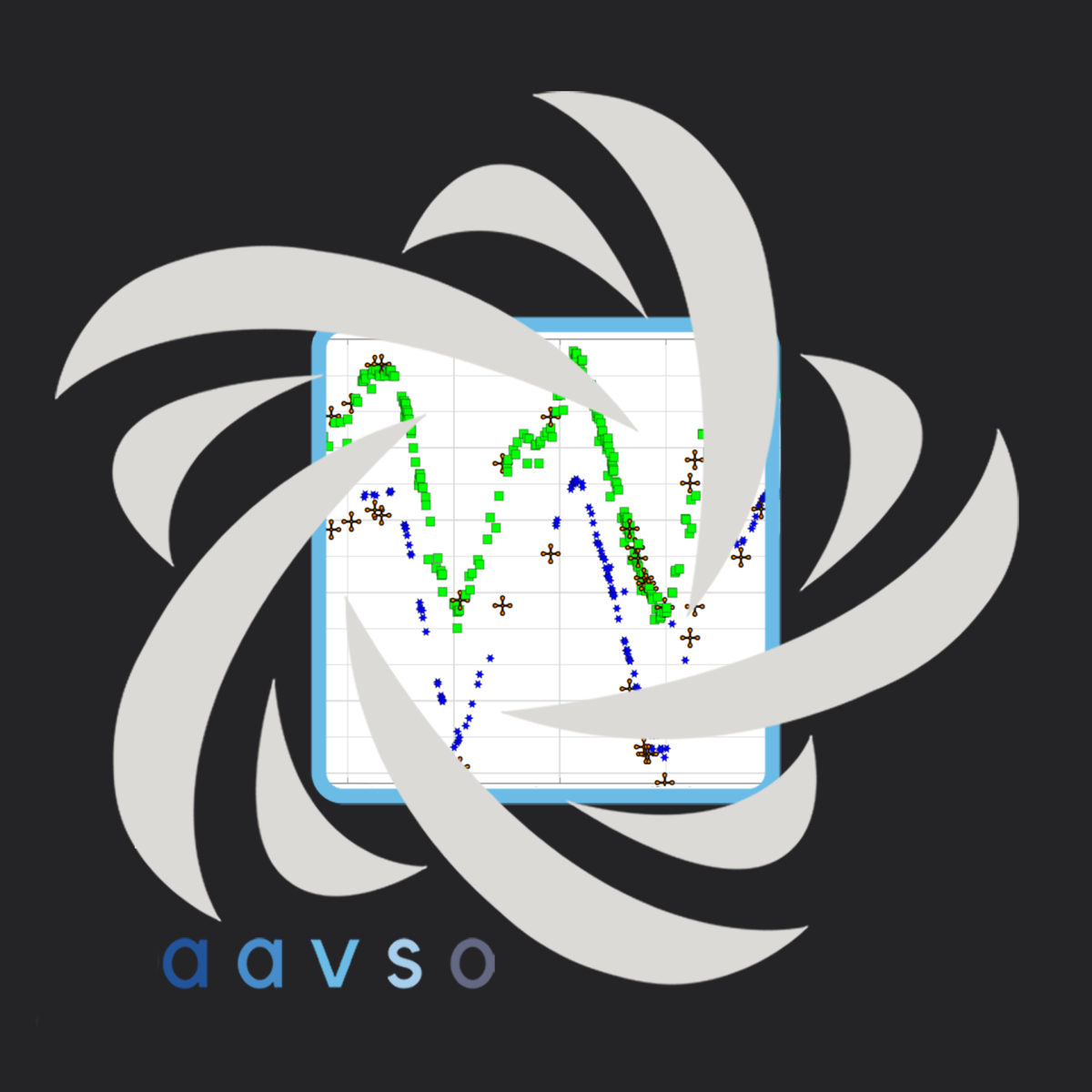
Webinar Description: The discussion will be catered to an audience who is familiar with acquiring images and the basics of image calibration using bias, dark and flat frames. MaximDL will be used for analysis of the images that will be used in this session, and VPHOT for the photometry.
In this webinar, Mark will compare the basic characteristics of DSLR, CCD and CMOS cameras for stellar photometry by analyzing a set of images of T Cep taken with each type of camera on the same telescope. The emphasis will be on the practical consequences of the different characteristics: noise, resolution, sensitivity, etc.
The T Cep images were taken over several years, as Mark moved from one camera to the next. He will also mention some quirks and challenges he has encountered over the years while learning to use these cameras.
Meet your instructor: Mark de Jong (AAVSO observer DJX) took his first, and only, astronomy course at university more than 50 years ago. However, he did not start actively observing until 2006, with variable stars as his main interest. After contributing over 1,000 visual observations on Long-period variables (LPVs), he moved on to DSLR, CCD, and then CMOS cameras for photometry, while continuing to primarily observe LPVs. Recently, he has served as an AAVSO Mentor for new DSLR and CMOS observers. He has a background in the physics of particle accelerators and has worked in government laboratories, universities, and the private industry.
How to observe variable stars with binoculars
Broadcast on January 7, 2023

Visual observing is an easy way to make a valuable contribution to science, even if you don't have much time or can't afford a telescope. There are hundreds of variable stars visible to the naked eye, and tens of thousands visible with binoculars, meaning that you'll never run out of fascinating targets to keep an eye on.
A few of the topics we'll cover:
- Why should you make visual observations of variable stars?
- Which variable stars should you observe?
- How to get and use charts
- How to make an estimate of your target’s brightness
- How to record and report your observations
- What's the best observing cadence?
- Equipment for observing
- Tips & tricks for better observing
Meet your instructor: Sherrill Shaffer has contributed more than 24,000 visual observations to the AAVSO’s database, most of them using binoculars. He also plays an important role in AAVSO’s data validation process and is an AAVSO Mentor to other visual observers. Shaffer's Ph.D. is from Stanford University, and he has held affiliations with the Federal Reserve, the University of Wyoming, and the Australian National University. He is a retired economist who has been an amateur astronomer for more than 30 years, and an active variable star observer since 2009.
